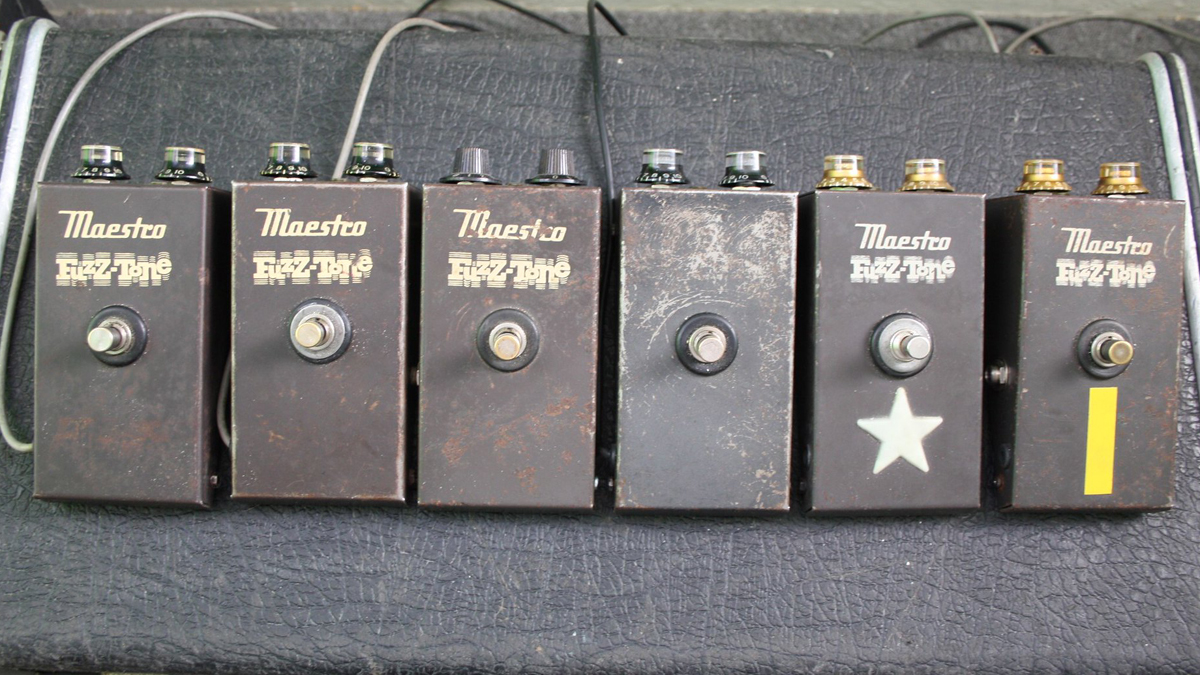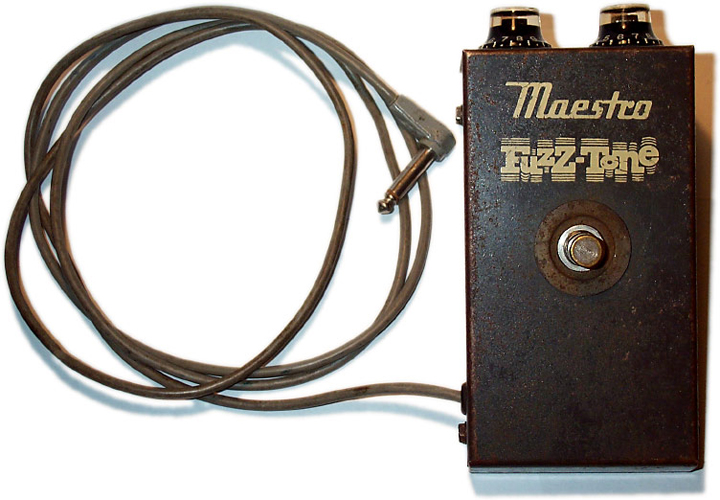The history and origins of the iconic Maestro FZ-1 Fuzz-Tone
From the effect's accidental discovery at the hands of a faulty preamp to its stratospheric popularity fueled by the Rolling Stones, here is a comprehensive breakdown of one of the most famous fuzz pedals ever created

It’s dirty, saturated and a little scary. Today, a fuzz-saturated electric guitar or bass guitar is a staple in the genres of rock, grunge, metal, and more. But, before the 1960s, the mainstream music listener had rarely even heard guitar saturation beyond that of a dimed tube amplifier.
Today, we’re exploring the vast legend of fuzz, from the first records where the effect could be found, to the players, designers and engineers that brought about a music revolution with only a few germanium transistors.
This is the story of the Maestro FZ-1 Fuzz-Tone.
Inception and a rumble of what’s to come

Before the first fuzz pedals began to be mass-manufactured in the early 1960s, a guitarist named Link Wray happened upon a “noisy” and “dirty” guitar tone when he intentionally began overdriving his tube amplifier during solos. Tube breakup, or overdrive, was already used in the '40s and '50s during the early rock 'n' roll boom to add a bit of grit to rhythm and solos, but only up to a certain extent.
Wray conducted more and more experiments with his guitar tone, including poking holes in speaker cones to further saturate his sound and achieve a signature fuzzy texture. This saturation was taken even further when Wray paired these experiments with a new (at the time) invention, the powerful Gibson humbucking pickup. Wray’s saturated tone can be heard on the 1958 instrumental Rumble by Link Wray and His Ray Men.
A few years later, a happy accident would catapult the fuzz race into second gear. In 1961, Grady Martin was recording a track called Don’t Worry by country western music artist Marty Robbins. That day, a faulty preamplifier in the studio distorted Martin’s tone into a fuzzy, dark texture. Intrigued by the saturation his guitar was getting from this faulty appliance, he tracked the solo for Don’t Worry using this newfound fuzzy tone.
Later that same year, Martin recorded an instrumental called The Fuzz under his own name using that same faulty preamplifier from the previous session. These two songs entered fuzz history by inspiring American rock band The Ventures to ask session musician and electronics enthusiast Orville Rhodes for help in recreating Martin’s “fuzz” sound.
All the latest guitar news, interviews, lessons, reviews, deals and more, direct to your inbox!
Soon thereafter, Rhodes supplied The Ventures with a custom “fuzzbox” he made. In 1962, The Ventures recorded The 2000 Pound Bee using this custom-commissioned effect.
Germanium satisfies Gibson

Then the fuzzy dominoes really began to fall. That same year, Gibson introduced the first mass-market fuzz pedal, the Maestro FZ-1 Fuzz-Tone. Designed by recording engineer Glenn Snoddy and engineer Revis V. Hobbs, the FZ-1 contained a three-germanium transistor circuit that was powered by two 1.5-volt batteries.
The FZ-1 was originally marketed to make your guitar achieve tones similar to those of a brass instrument. Gibson even began inserting the circuit into their EB-0F basses in 1964 to further push the FZ-1 circuit.
It wasn’t until 1965 and the release of the Rolling Stones’ hit (I Can’t Get No) Satisfaction that mainstream audiences began to experience fuzz in full effect. This one track single-handedly flung Maestro FZ-1 sales into the stratosphere. In fact, sales increased so heavily that Gibson sold out of their entire stock of fuzzboxes.
And to think Satisfaction and its fuzz-heavy riff were almost not included on the album as we know it. Keith Richards himself stated that he had laid down a scratch track for the song as a guide, with the fuzz effect standing in for a full brass section. But that planned brass section would never be used with the Rolling Stones, and against his own wishes the original fuzz track remained.
Fuzz legacy and beyond
After the stunning success of the FZ-1 for Gibson in the mid-1960s, the brand would later revise the popular circuit using 2N2614 or 2N2613 transistors, powered by a single, 1.5-volt battery. This redesign was dubbed the “Maestro FZ-1a” and built within the same wedge-shaped enclosure.
In 1968 the design changed again. This time, legendary synthesizer engineer Robert Moog crafted a circuit using a nine-volt power supply that powered two or four (depending on the date of manufacturer) silicon transistors. This redesign was labeled the “Maestro FZ-1B.” Then, in the 1970s, the FZ-1S Super-Fuzz updated the decade-old design with a different look and distinctly different sound.
Gibson itself re-issued the Maestro FZ-1a Fuzz Tone in the 1990s and has since discontinued the model. But countless boutique companies and bigger pedal brands continue to keep the FZ-1 legacy alive with modern fuzz boxes inspired by the circuit design and sound of the original Fuzz-Tone.
- Nicholas Wedyke is a writer for Guitar Tricks.
